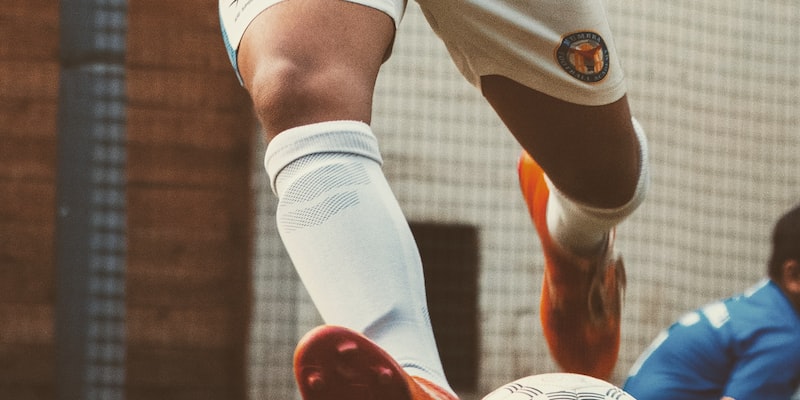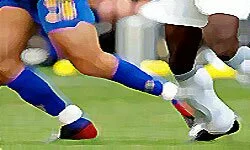What is the most tiring position in soccer?

Exploring the Physical and Mental Stamina Required for the Most Tiring Soccer Position
Soccer is known for its intense physicality and the amount of stamina it requires from its players. But what is the most tiring position in the game? To answer this question, we must take a look at the physical and mental demands of the various positions in soccer.First, let’s look at the physical aspect. Players in the midfield must have high levels of fitness to be able to keep up with the game. Midfielders must be able to run for long periods of time and have the ability to sprint when necessary. They must also have great agility and be able to make quick turns and changes of direction. Furthermore, midfielders must be able to make accurate passes and be able to read the game quickly.
On the other hand, defenders must have a high level of physical fitness, too. Defenders must be able to cover a lot of space, be able to tackle and block shots, and make quick decisions. Additionally, they must have great concentration and an ability to read the game effectively.
Finally, let’s look at the mental aspect. All soccer positions require a great deal of mental stamina, but the most tiring position is undoubtedly the goalkeeper. Goalkeepers must be able to stay focused for long periods of time and be able to make quick decisions. They must also have great reflexes and be able to stay calm under pressure.
In conclusion, the most tiring position in soccer is the goalkeeper. They must possess both physical and mental stamina to be able to perform at their best. The other positions also require a great deal of physical and mental stamina, but the goalkeeper is the ultimate test of a player’s endurance.
Comparing the Physical and Mental Challenges of Different Soccer Positions
When it comes to soccer, the most tiring position is often debated. The physical and mental demands of each position on the field are unique and can vary significantly. Some roles require players to continually move around the field, while others require them to be in a stationary position for long periods of time. Additionally, some positions require more in-depth tactical knowledge than others. In this blog section, we’ll compare the physical and mental challenges of different soccer positions.Forwards and midfielders are often considered the most physically demanding positions in soccer. Forwards must be able to sprint up and down the field to create scoring opportunities. Midfielders need to have the endurance to cover the entire field, as well as the skill to distribute the ball to their teammates. As these positions involve a lot of running and ball work, they require players to have high levels of fitness.
Defenders and goalkeepers also require a great deal of physical and mental stamina. Defenders must be able to move quickly to close down attackers, while goalkeepers must be able to anticipate shots and react quickly to save them. The goalkeeper also needs to have good communication skills, as they are expected to direct the team’s defensive line.
In comparison to other positions, the role of a coach or manager is often seen as the least demanding position in soccer. Coaches and managers must have a good knowledge of the game and be able to lead their team effectively. However, the job requires less physical activity than other positions.
Overall, there is no one position in soccer that can be considered the most tiring. Each position has its own unique challenges and demands. Depending on a player’s individual skills and abilities, some positions may be more tiring than others. Ultimately, it comes down to personal preference and what a player is best suited for.
Examining the Benefits of Playing a Tiring Soccer Position: The Pros and Cons
If you play soccer, you know that different positions require different levels of effort and energy. Depending on how you play the game and how you’re utilized, certain positions can be more tiring than others. But there are definite benefits to playing a tiring position, so it’s worth exploring the pros and cons.Pros:
1. You’ll get to see the whole pitch: Playing a tiring position allows you to cover a lot of ground and see the full pitch. Whether you’re playing a defensive or attacking position, this can help you to anticipate the flow of the game and make strategic decisions.
2. You’ll develop good stamina: Playing a tiring position requires a lot of energy and endurance. Over time, this will help you to develop a good level of stamina that will prove useful in other sports and activities.
3. You’ll be able to make a difference: Playing a tiring position can help you to make a real difference for your team. You may be the one pushing your team forward or providing the defensive cover that can be the difference between victory and defeat.
Cons:
1. You’ll be more prone to injury: Since tiring positions require a lot of physical activity and effort, there’s an increased possibility of injury. If you’re not properly conditioned and don’t take the necessary precautions, you’re more likely to suffer from a strain or sprain.
2. You may tire yourself out: Playing a tiring position can take a lot out of you and can be mentally and physically draining. After a while, this can take its toll and leave you feeling tired and unmotivated.
3. You may not see much of the ball: If you’re playing a tiring position, you may not be involved in the game as much as you’d like. You may be required to cover a lot of ground and track back, meaning that you’re not involved in the attacking play as much as you’d like.
In conclusion, playing a tiring position in soccer can be both beneficial and detrimental. While it can help you to develop good stamina and can make a real difference for your team, it can also be physically and mentally draining and may leave you more prone to injury. Ultimately, it’s important to consider the pros and cons before committing to a tiring position.







